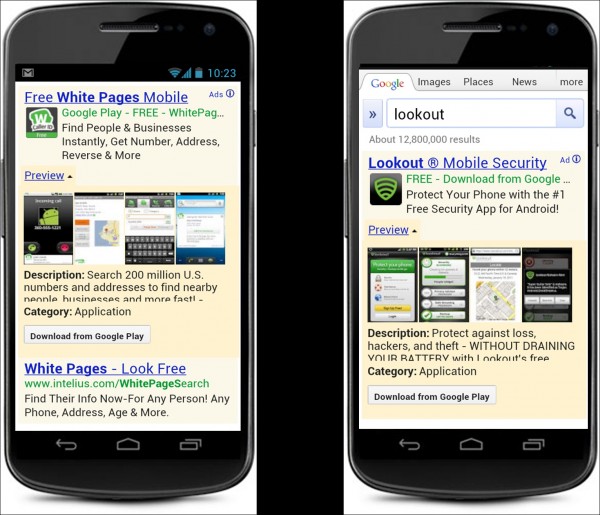Many marketer\’s may go on about mobile marketing and the benefits of getting a mobile marketing strategy started, but you may not know the core reasons behind it. Here\’s a great article from Richard Eaves from the Search Engine People blog that goes through the reasons of why you need one and backed it up with proof.
Read the article below and leave a comment at the end if you agree with these 8 facts.
8 Facts Backed By 18 Stats To Convince Your Boss To Put Money Into Mobile Marketing – NOW
I could tell you that mobile is the future of digital marketing, but that would be a lie. It\’s already here.
If you haven\’t yet joined the revolution, it\’s never been more urgent to shift your focus to the mobile customer. By the end of next year you\’ll see a distinct division between brands who\’ve made the transition to mobile and those too stubborn to follow.
These will help you choose a side:
1. Mobile internet is popular. Really popular
Deloitte Consumer Review claims that 72% of consumers in the UK owned a smartphone as of May 2013. 10 months prior that it was only 58%.
(via HappyAndroid)
In the US, more than 58% of American consumers already own a smartphone. And worldwide? Well, 1.2 BILLION people are now accessing the internet through their mobile devices.
In fact, if this surge in mobile sales continues, tablets, according to International Data Corportation, will soon outsell laptops and PCs by next year.
2. Mobile users are more likely to action
Mobile is a HUGE game changer for e-commerce marketing. 9 out of 10 mobile searches lead to an action while 50% lead to purchases.
(via Mobi Apps Experts)
In fact, 74% of all smartphone users use their phones for shopping, while 79% make purchases using their mobile devices. In relation to apps, 73% of users would rather go to a mobile website to shop than use their mobile apps.
3. Mobile marketing is great for local SEO
Mobile searches are 66% more likely to have local intent than a desktop search. In fact, 50% of all local searches come from mobile devices. And, 95% of smartphone users looked up local information.
These statistics shouldn\’t be much of a surprise. It stands to reason that searchers using a mobile are out and about, and are likely to search for something within their immediate vicinity. This represents a huge marketing opportunity for businesses. Do the basics right, such as ensuring your G+ page is fully and accurately filled out; make sure that your contact information is clearly visible on your website, and your business is registered on Google Maps.
4. Mobile marketing strategies are plentiful and varied
Fortunately for marketers who are just beginning to focus efforts on mobile marketing, there are a healthy variety of strategies to try. How they work would naturally depend on the industry, target audience, and marketing budgets.
App-based marketing involves mobile apps. You can create a basic business app through websites like AppsBuilder and AppYourself.
(via Stringcan Interactive)
Services like Google AdMob can also help you promote your app within existing mobile apps. It\’s a great starting premise for advertisers. And even when you\’re offering free apps, you can still monetize them with the help of AdMob. Learn more about it here.
In-game mobile marketing features ads that appear within or during mobile games. They can be banner pop-ups, full-page image ads, or even video ads that appear during loading screens.
(via Wordstream)
QR codes are ads that can be scanned by users to take them to a webpage that the QR is attached to. This is often used by magazine websites, newspaper websites, and video gaming sites. There\’s a very real sense of gamification involved in the use of QR codes.
(via Jatxt)
Location-based marketing appears on mobile devices depending on a user\’s location. For instance, some advertisers only want their business ads to appear when users are connected to their WiFi. Some marketers only make their apps available to those within 1km of their retail store. This allows you to finely target targeted campaigns to those who are more likely to convert.
Mobile search ads are Google search ads for mobile users, often including add-on extensions, click-to-call, click-to-action, or maps.
(via AdWords Blogspot)
Mobile image ads are designed to appear on mobile devices. They can be part of loading screens during app usage, as part of website banners, or as pop-ups on homepages.
5. Social media and mobile marketing are one and the same
About a third of the 600+ million Facebook users use Facebook mobile. Out of the 165 million Twitter users, 50% use Twitter mobile. There are around 200+ million YouTube views on mobile devices each day. Let\’s call out the obvious here: social is officially mobile.
(via Boomerang Istanbul)
The seamless integration of marketing into a fun and personalised activity has never been more impressive. It\’s a potential gold mine for marketers. One moment people are reading personal messages on Facebook, the next they\’re reading ads without consciously being aware of it. These two extremes (personal and business) have never been in such close proximity.
Another highlight here is the fact that people carry their mobile devices almost everywhere, allowing for a constant ad stream, wherever a user may travel. But this also means that there\’s a permanent interaction opportunity for customers, too. One tweet to a company\’s Twitter profile should yield a fairly instant reply. And it\’s a big thumbs-up for a customer service department and the business as a whole if they do.
6. Type of device matters
Tablet or smartphone?
Websites get more mobile traffic from tablet users than they do smartphones, the simple premise being that tablets are almost the same as laptops, sans the keyboard and bulky frame. In fact, people browse through 70% more web pages per visit when browsing on a tablet as opposed to a smartphone. Conversion rates on tablets are also three times greater than on smartphones.
Its important to understand your customer base and know what type of device they are likely to be using. Google Analytics can help you with this.
7. Responsive Web Design
The transition to responsive web design has never been more pressing. 62% of companies that designed their websites specifically for mobile had increased in sales. 48% of users also say that if they arrive on a business site that isn\’t working well on mobile, they take it as an indication of the business simply not caring. You can also find more stats from this infographic.
With more unique screen sizes available today (232 on average) and with more shoppers going mobile, imagine the great opportunity you\’ll have when your business info, contact page, and products pages are easily viewable on any screen. Imagine the pool of potential customers you\’ll attract when they can shop/browse/read your website right there on their smartphones.
8. This really is just the beginning
By 2016, based on current sales projections, half the world will be using tablets. By 2014, mobile usage is predicted to overtake desktop Internet usage, especially with the rise of 3G and 4G cheap data plans in developing countries like India, Philippines, and China. (Source Convince & Convert)
In the long run, there\’ll be nearly 2 billion mobile internet users around the world by 2015.
What happens now?
For every user shifting to a mobile device from a laptop or personal computer, you\’re losing significant advertising revenue. Opportunities for engagement with apps, social media, and mobile-friendly websites have never been greater and the stakes have never been higher.
While others live in the past, it\’s time to put your own foot forward.









